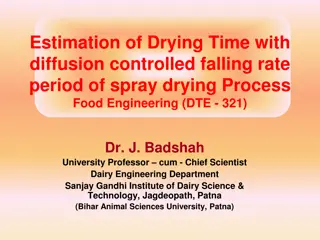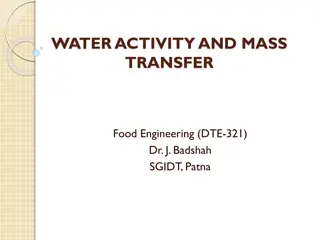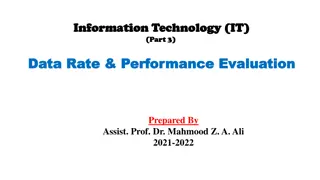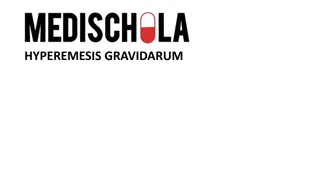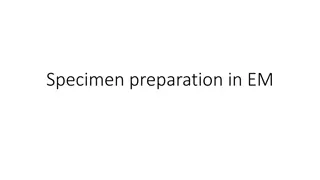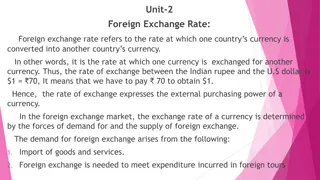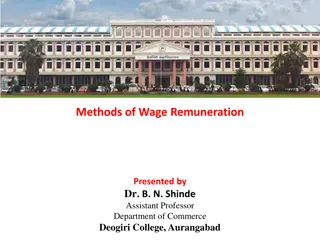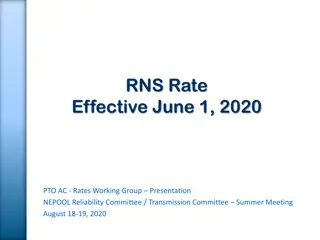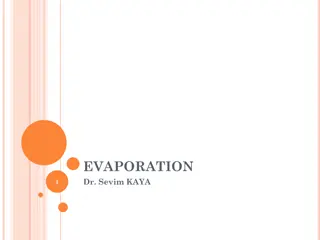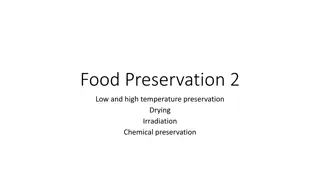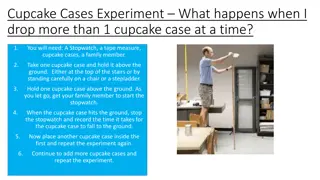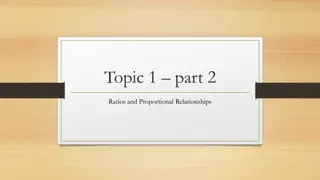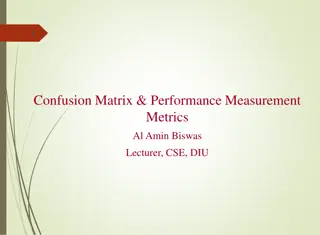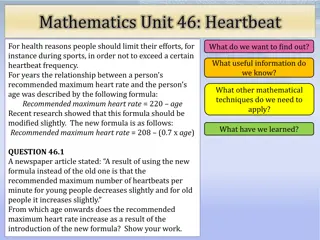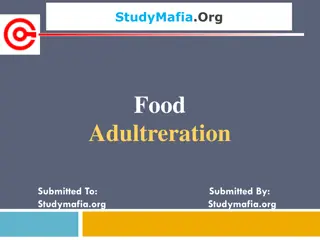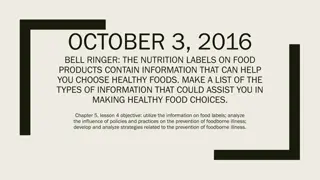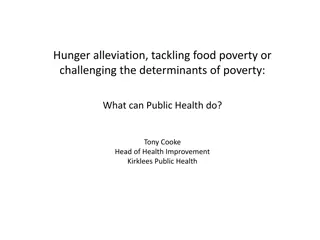Understanding Food Dehydration: Constant vs. Falling Rate Periods
Food dehydration involves constant rate periods where moisture evaporates uniformly until a critical point is reached, and then transitions to falling rate periods where drying slows down. Various drying methods and characteristics of air play crucial roles in this process, impacting the efficiency of food dehydration.
Download Presentation

Please find below an Image/Link to download the presentation.
The content on the website is provided AS IS for your information and personal use only. It may not be sold, licensed, or shared on other websites without obtaining consent from the author. Download presentation by click this link. If you encounter any issues during the download, it is possible that the publisher has removed the file from their server.
E N D
Presentation Transcript
Food dehydration: Constant rate period and falling rate periods Food Engineering (DTE -321) Dr. J. Badshah University Professor cum - Chief Scientist Dairy Engineering Department Sanjay Gandhi Institute of Dairy Science & Technology, Jagdeopath, Patna (Bihar Animal Sciences University, Patna)
Constant Rate Period of Dehydration In conventional drying the heating medium, generally air, comes into direct contact with the solid. Various oven, rotary, fluidized bed, spray and flash dryers are typical examples. All solid materials have a certain equilibrium moisture content when in contact with air at a particular temperature and humidity. The material will tend to lose or gain moisture over a period of time to attain this equilibrium value. In conduction drying, the heating medium is separated from the solid by a hot conducting surface. Examples are drum, cone, and trough dryers. In radiation dryers, the heat is transmitted as radiant energy. Some dryers also use microwave energy to dry food materials at atmospheric pressure or at vacuum. Diffuion of moisture from within the droplet maintains saturated surface conditions and as long as these lasts, evaporation takes place at constant rate from the surface similar to open faced body of water. It means the surface remains completely wetted.
Constant Rate Period of Dehydration Foods are characterized as hygroscopic and non-hygroscopic. Hygroscopic foods are those in which the partial pressure of water vapour varies with the moisture contents. The difference is found by sorption isotherms. When food is placed into a dryer, there is short initial settling down period as surface heats-up to the wet bulb temperature. Drying commences and, provided that water moves from the interior of the food at the same rate as it evaporates from the surface, the surface remains wet. This is known as constant rate period and continues until a certain critical moisture content is reached. In practice different areas of food surfaces dry out at different rates, and overall, the rate of drying declines gradually during the constant rate period. Thus the critical point is not fixed for a given food and depends on the amount of food in the dryer and the rate of drying. The three characteristics of air that are necessary for successful drying in the constant rate period are: A moderately high dry bulb temperature, A low R H of air and high air velocity.
Constant Rate Period of Dehydration For steady state operation under adiabatic condition, the rates of heat and mass transfer are: Q = hGA (tG ti) Na= KGA (pi -pG) Where, hG= Heat transfer coeff. From air to wetted surface KG= Mass transfer coeff. From wetted surface to air A = surface area tG= Bulk temperature of air ti= temperature of wetted surface = Wet bulb temperature of air at saturated humidity Pi = Partial pressure of water vapour at interface pG= partial pressure of water vapour in the air Na= Rate of evaporation from wetted surface into air in Kg mole /hr KG= Mas transfer coeff. from wetted surface to air in kg mole/hr .m2 On equilibrium at steady rate, the constant drying rate in kg H2o/m2 .hr = dw/(d . A) = hGA (tG ti)/ L = 18 KGA (pi -pG), where L = latent heat of evaporation at ti
Typical Drying Rate curve and temperature vs Time curve
Drying Rate Curve: Constant, Falling and Diffusion controlled period curve The form of drying rate curves depends on Momentum, heat and mass transfer, physical properties of the food, air and water vapour mixtures, and macro and microstructure of food product. Importance of mechanism mechanism by which moisture moves within the solid.
Falling Rate Period of Drying The surface temperature of the food remains close to the wet bulb temperature of the drying air until the end of the constant rate period, due to cooling effects of evaporating water. During the falling rate period the amount of water evaporating from the surface gradually decreases but as the same amount of heat being supplied by the air the surface temperature rises until it reaches the dry bulb temperature of the drying air. Most heat damage to food occurs in the falling rate period. The surface therefore dries out. This is usually the longest period of drying operation. When the moisture content of the food falls below the critical moisture content, the rate of drying slowly decreases until it approaches zero at equilibrium moisture content. This is known as falling rate period. to the surrounding air. Non-hygroscopic foods have single falling rate period whereas hygroscopic foods have two periods. In the first period the plane of evaporation moves inside the food, water diffused through dry solid to the drying air. It ends when plane of evaporation reaches the center of the food and the partial pressure of water falls below the saturated water vapour pressure. The second period occurs when the partial pressure of water is below the saturated vapour pressure as drying is by desorption.


